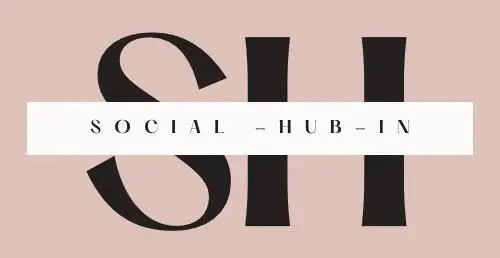By November 2025, AI image editors have ceased to be simple filters or smart retouching applications – they have become smart collaborative creative entities. Such sites read textings, study lighting, propose design changes, and even create images completely out of nothing. To creators, developers, and marketers, they have become the foundations of the visual storytelling and quick-turnaround digital campaigns.
This has led me to shortlist the most viable and productive options within the present context following weeks of trial and error of different platforms. A pair of those AI image editors will fit any workflow that you have, whether you need to make portraits, create realistic visuals of a product, or engage in experimentation with a new style.
At a Glance
The top AI image editors in 2025 are the ones that are fast and intelligent as well as creatively flexible. Magic Hour is on the frontline due to its intelligent prompt-based editing and high-definition output that seems to be custom-made to creators. Adobe Firefly is better at consistency in its brand and in its symbiosis with design ecosystems, whereas Canva Magic Studio is the easiest solution to the marketing team. Runway ML graciously bridges the gap between motion and stills creators who transit. In the meantime, Fotor is a bright option of e-commerce editing fast, and Pixlr remains the most suitable option to the user that requires a lightweight solution and quick, browser-based edits.
Every one of the tools fulfills another creative need, yet they all have a common purpose, which is to streamline visual creation and make it smarter and more accessible.
Best All-in-One AI Image Editor: Magic Hour
When I tried Magic Hour in the AI Image Editor, it instantly stood out due to the ease with which the creative intent is transformed into refined images. You can also type in a command such as make the lighting cinematic or add soft shadows, and the system takes it beautifully as opposed to using the manual sliders. The workflow is conversational and powerful enough, it is suitable both to experienced creators and beginners who would like to get fast and professional results.
Another application Magic Hour provides is an AI Image Editor free version Prompt, where users can use all the functions of the application without watermarks or paywalls. It is fully browser-based and can be rendered in high-resolution, so it is the best choice for those professionals who seek flexibility and mobility.The AI Image Editor with Prompt Free lets you create and enhance visuals effortlessly using natural text commands—no subscription, watermarks, or technical barriers.
The thing that can be considered special about Magic Hour is its accuracy, in the eyes of a creator. The AI learns context, respects natural textures and never overprocesses photos. The editing is in a participatory instead of a mechanical manner – as though the system were actually aware of artistic intent. An AI Talking Photo brings still portraits to life by animating facial movements and speech in perfect sync with your chosen audio or script.
The pricing starts at the point of $15 a month and has a free tier that provides high editing capacity. In the case of 2025, this is my choice of AI editor that anybody would want to take seriously in creating good visuals.
Adobe Firefly: and Design Professionals
Firing Adobe Firefly, the application still reigns supreme in the professional segment by its strong integration with Photoshop and Illustrator. Its best feature, Generative Fill, allows you to continue, delete or substitute parts of an image with the help of simple textual messages. Though it is a little more technical than Magic Hour, it is doing a great job at keeping the lighting, tone, and color of brand visuals consistent.
Firefly is perfect for designers and agencies who have already purchased Adobe Creative Cloud. The integration of AI is smooth, and the rights to commercial use make it a good fit to enterprise projects. The subscription model is the only drawback because it may be costly to the freelancers. Nevertheless, Firefly is also one of the leading candidates of teams that require a consistent design of the bulletproof.
Canva Magic Studio: Marketers and Teams
Canva Magic Studio is still providing results to social media managers and marketers who want results quickly. It is powerful due to its automation, background removal, smart resizing, and object editing are all AI-based so that campaign creation is as efficient as it is user-friendly. You simply post a picture, write something simple, such as take the mug out or turn the background to ocean blue and it does the work in a few seconds.
While it’s not built for complex photo manipulation, Canva’s collaborative environment makes it perfect for teams. The tool automatically harmonizes brand colors and formats visuals for every platform. It’s the most approachable AI editor for non-designers who still need high-quality output.
read more : Revolutionize Your Power Supply with Mobile Solar Containers
Runway ML: To Stills In Motion
The cross over tool between photo and video creation is Runway ML. It has AI-based editing functionality not only of stationary pictures but also of pictures to video workflows in order to transform them into motion. The AI brush and object tracking features are also used to make the compositions quicker than ever.
Pixlr: Light, Dependable and Quick
Pixlr is also a stable and widely used option to users that like a lightweight browser-based editor. In 2025, it was upgraded with AI background creation and refined retouching features, which were good enough to allow users with simple designer skills or mobile designers. Although it lacks the whole creative creation as Magic Hour does, it remains relevant due to its convenience and speed to use on a daily basis.
read more : Revolutionize Your Power Supply with Mobile Solar Containers
My Test and Ranking of These Tools
In two weeks, I collaborated with all AI editors on the same images of portraits, landscapes, and products. The test was on accuracy in editing, creative flexibility, quality in output and real life usability. I have tried both free and paid plans and it is possible to understand where the real value of each site is.
The results of Magic Hour were always the most balanced: combining professional-level control and natural AI-based improvements. Its conversational editing model, as well as its rapid processing, qualifies it as the number one recommendation in 2025.
Trends that are Building AI Image Editing in 2025
The AI editing environment is becoming homogenized. Tools that were previously specialized in one area (such as face swap ai, image to video, or lip sync ai) are being combined into cohesive creative tools. The beginning of this change has already been taken up by platforms like Magic Hour where creators can transition between still image editing and generative motion.
The use of natural language workflows is also being observed to gain more importance. As opposed to mastering dozens of sliders and filters, users just tell what they want, and AI understands it in perspective. Intent-aware editing will be the next technique, it will be systems not just executing a command but interpreting creative intent, like make this look cinematic or match brand tone.
Final Takeaway
Magic Hour will be the AI image editor you pick in 2025. It is rapid, intuitive and truly creative, an infrequent grouping that gives strength to both the professional and the beginner. Adobe Firefly should be preferred by designers who care about the brand, whereas Canva Magic Studio can be used by the marketing departments that require expediency and ease of use. Runway ML would suit the users who combine both still and movement image, and Pixlr or Fotor will work on simple assignments fast.
Finally, an ideal AI editor is workflow-based. Yet there is one thing that is obvious, and that is the boundary between editing and creating is becoming blurred. These tools do not merely effect changes upon the visuals; they are jointly co-creators of the visuals.
FAQ
1. Why are AI image editors superior to the old ones?
AI editors scan the natural language, automate the changes, and create the images independently, spending less time and eliminating repetitive tasks.
2. Is it possible that AI image editors are safe to be used by professionals?
Yes. The majority of platforms, such as Magic Hour and Firefly offer commercial-use rights of generated content.
3. Are professional designers going to be replaced by AI editors?
No. They increase productivity and still depend on human creativity and decision-making.
4. What is the tool that can be used as a beginner?
The free editor of Magic Hour and Canva Magic Studio both have a simple interface that can be mastered by a beginner within minutes.
5. What is the most popular AI editing at the moment?
The next wave is characterized by prompt-based editing and multi-modal generation; tools that deal with both still images and motion content.
If you want an AI image editor that’s both powerful and practical, Magic Hour is the one to start with. It’s not just editing software — it’s a creative companion that evolves with your ideas.







